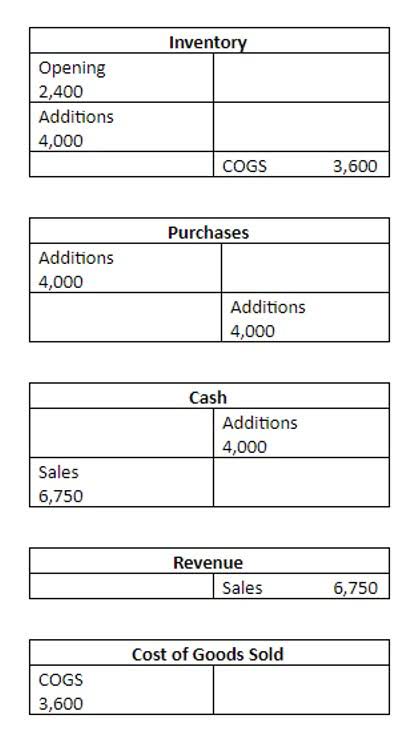
During the month of February, Metro Corporation earned a total of $50,000 in revenue from clients who paid cash. Enter your name and email in the form below and download the free template now! You can use the Excel file to enter the numbers for any company and gain a deeper understanding of how balance sheets work. Generally, a mix of both types of investment helps balance your cash flow strategy. Yet making any investment involves some degree of research and vetting. You want to maximise your cash flow through regular returns on investment.

AUD CPA Exam: Understanding When It’s Acceptable to Agree to Management’s Request for a Change in Engagement Type
The importance of cash flow from assets cannot be understated, as it serves as a compass for various stakeholders navigating the financial landscape of a business. Calculating cash flow from assets is helpful because of the insights it provides into your company’s financial health, efficiency, and operational effectiveness. cash flow from assets equals: The cash flow statement complements the balance sheet and income statement. It is part of a public company’s financial reporting requirements since 1987. Reviewing a company’s cash flow will help an investor obtain a sense of how well-prepared that organization is to cover its financial liabilities.
. Gather Financial Statements
- You can use the Excel file to enter the numbers for any company and gain a deeper understanding of how balance sheets work.
- Includes non-AP obligations that are due within one year’s time or within one operating cycle for the company (whichever is longest).
- Management makes informed decisions about investments, divestitures, or replacements by assessing which assets yield strong cash flows and which don’t.
- This is unfortunate because if you adjust for the fact that capital expenditures (CapEx) can make the metric a little lumpy, FCF is a good double-check on a company’s reported profitability.
Businesses can choose from long-term or short-term investments and equity or debt to invest in, depending on their business goals, needs, and risk tolerance. For yield-oriented investors, FCF is also important for understanding the sustainability of a company’s dividend payments, as well as the likelihood of a company raising its dividends in the future. Free cash flow is an important financial metric because it represents the actual amount of cash at a company’s disposal. A company with consistently low or negative FCF might be forced into costly rounds of fundraising in an effort to remain solvent. While a healthy FCF metric is generally seen as a positive sign by investors, it is important to understand the context behind the figure. For instance, a company might show high FCF because it is postponing important CapEx investments, in which case the high FCF could actually present an early indication of problems in the future.
The Basic Accounting Equation
You’ll find these financial numbers in your company’s balance sheet or income statement. Enter the operating cash flow, net capital expenditure, and changes in net working capital to determine the cash flow from assets. Determine your company’s change in net working capital (? NWC) by comparing the balance sheets from two consecutive periods, such as fiscal quarters or years.
It shows how the business received and spent cash, providing a complete picture of what occurred with the business’s cash during the time frame in question. It also confirms whether the organization can pay its expenses and debts. A cash flow statement can tell you a lot about a business – find out how to read the statement, what the statement should include and the preparation methods right for you. Operating income is also called earnings before interest and tax (EBIT), and it shows how profitable a company is before tax deductions and interest expenses. All you have to do is subtract your taxes from the sum of depreciation, change in working capital, and operating income. Operating cash flow is the money that covers a business’s running costs over a fixed period of time.
- This section of the cash flow statement shows how much cash the company generates from raising funds and repaying debt.
- At the end of the statement is the closing balance of cash and cash equivalents for the current reporting period.
- This core assessment is particularly valuable for internal stakeholders and potential investors looking for a transparent evaluation of the business’s primary functions.
- This method involves accounting for all transactions that resulted in cashing going into (or out of) a business during the specified time frame.
- A change in working capital can be caused by inventory fluctuations or by a shift in accounts payable and receivable.
- For this reason, unless managers/investors want the business to shrink, there is only $40 million of FCF available.
From this CFS, we can see that the net cash flow for the 2017 fiscal year was $1,522,000. The bulk of the positive cash flow stems from cash earned from operations, which is a good sign for investors. It means that core operations are generating business and that there is enough money to buy new inventory. Changes in cash from investing are usually considered cash-out items because cash is used to buy new equipment, buildings, or short-term assets such as marketable securities. But when a company divests an asset, the transaction is considered cash-in for calculating cash from investing.

#2 Cash Flow (from Operations, levered)
On a surface level, more cash flowing in than out reflects a financially healthy business. Both GAAP and IFRS accept either preparation method, but IFRS prefers the direct method. In this case, any cash paid or owed for investments appears in the operating activities section. Because cash flow statements follow accounting standards, they can also be used as comparative tools.